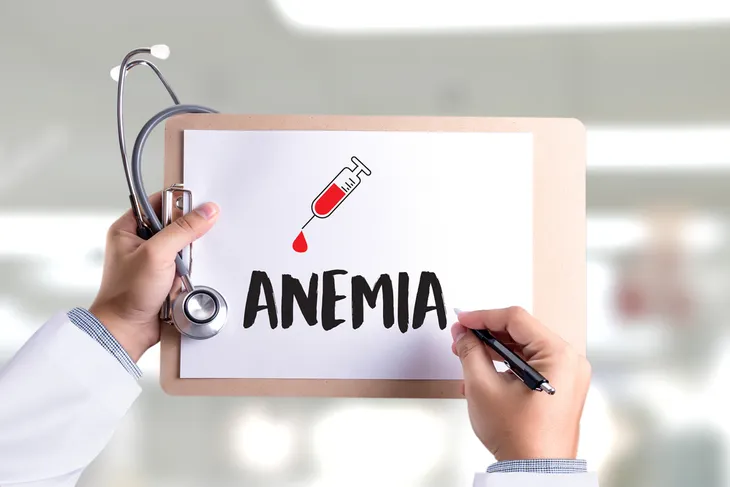A peptic ulcer is like a nasty canker sore (or crater) that typically develops either in the lining of the stomach (a gastric or ulcer) or at the opening of the small intestine in the duodenum (a duodenal or ulcer). Ulcers occur due to an imbalance of digestive juices or if the stomach lining suffers some form of damage (i.e., alcoholism).
An ulcer can be extremely painful, so it’s difficult to ignore if you develop one. However, if left untreated, the ulcer can eat into the stomach wall causing a perforated ulcer or the blood vessels causing a bleeding ulcer, resulting in damaging and excruciating health complications. Here are 15 very evident signs that you may be suffering from an ulcer…
1. Abdominal Pain
Pain in your abdomen, typically between the breastbone and belly button region, may follow a meal as the stomach empties. The pain will often come and go in waves of burning or stabbing pain.
2. Increased Indigestion
An ulcer can cause terrible indigestion and gas pain, which usually means burping and hiccupping following meals.
3. Nausea
Due to an imbalance of digestive juices, you will likely feel mild to severe nausea with an ulcer, typically first thing in the morning on an empty stomach.
4. A Heavy Abdomen
It’s quite common as an ulcer develops to feel a sensation of heaviness or fullness in the belly, similar to a weight or the burdensome feeling you get after consuming a lot of water.
5. Flu-like Symptoms
Most ulcer patients will mistakenly shrug off flu-like symptoms, such as fatigue, general malaise, fever, and nausea, as the flu.
6. Appetite Loss
The sudden and sharp stomach pains that many ulcer patients feel a few hours after a meal (during the digestion phase) will often cause them to fear eating or totally lose their appetites.
7. Unexplained Hunger
It’s also quite typical to feel hunger pangs with an ulcer a few hours after eating a full meal. These aren’t hunger pains, but rather ulcer pains caused by increased digestive juices.
8. Sudden Weight Loss
With a loss of appetite, sudden weight loss due to lack of eating will occur. You may also suffer from sudden weight loss if your ulcer is causing you to vomit frequently after meals.
9. Discolored Stool
Bowel movements can appear darker, pasty (or flour colored), or even carry tinges of bloody if your ulcer is growing in size or becoming more severe (i.e., developing into a bleeding ulcer).
10. Bloody Vomit
Vomiting is typical with an ulcer due to the high levels of digestive juices sloshing around in your intestines and stomach. However, if your vomit contains traces of blood, your ulcer is advanced and needs attention immediately.
11. Fullness and Bloating
Even though individuals with ulcers may find themselves feeling incredibly hungry shortly after eating a large meal (when they do eat), they tend to get full quite quickly and usually after eating far less food than they normally would.
In addition to feeling full easily, ulcer patients may experience bloating, where the stomach swells because it is full of gas or air. The NHS indicates that bloating may be especially common after eating fatty foods, such as those that are fried.
12. Anemia
A symptom of ulcers that can be harder to detect is anemia. Anemia is a disorder that occurs when the body lacks a sufficient number of red blood cells to carry the necessary amount of oxygen to the body’s cells.
But how exactly are the two conditions linked? Well, in some cases ulcers can bleed and, as eMedicineHealth.com explains, “because of ongoing, chronic slow blood loss, iron is also lost from the body (as a part of blood) at a higher rate than normal and can result in iron deficiency anemia.”
13. Shortness of Breath
Experiencing shortness of breath is actually a symptom of anemia, which can result from the chronic blood loss from an ulcer. But since anemia can be harder for an individual to detect without seeing a doctor, shortness of breath is often what is most noticeable.
Shortness of breath occurs with anemia due to a shortage of red blood cells, whose job it is to carry oxygen to the cells of the body, including those in the lungs, making it more challenging to breathe.
14. Feeling Faint
Feeling faint, lightheaded, or dizzy are all additional symptoms of a bleeding ulcer. This consistent blood loss can lead to anemia, as mentioned earlier, which can cause a person to become lightheaded or even pass out (faint).
It occurs most commonly when someone tries to stand up quickly after being seated or lying down for an extended period of time, and the body is unable to pump enough blood to the brain. In addition to feeling faint, lightheaded, or dizzy, people who have developed anemia as a result of an ulcer may also experience weakness and excessive fatigue.
15. Stomach Discomfort
People with ulcers may also experience symptoms similar to those of acid reflux and heartburn. And while they may feel the same, they are not. For those with ulcers, stomach discomfort is the result of the ulcer being aggravated by stomach acid.
However, the acid does not tend to come back up from the stomach and into the esophagus as is the case with acid reflux and heartburn. Another distinguishing difference between the conditions is that stomach discomfort tends to be eased by eating and drinking with ulcers, whereas acid reflux is generally triggered by the consumption of certain foods and beverages.


















